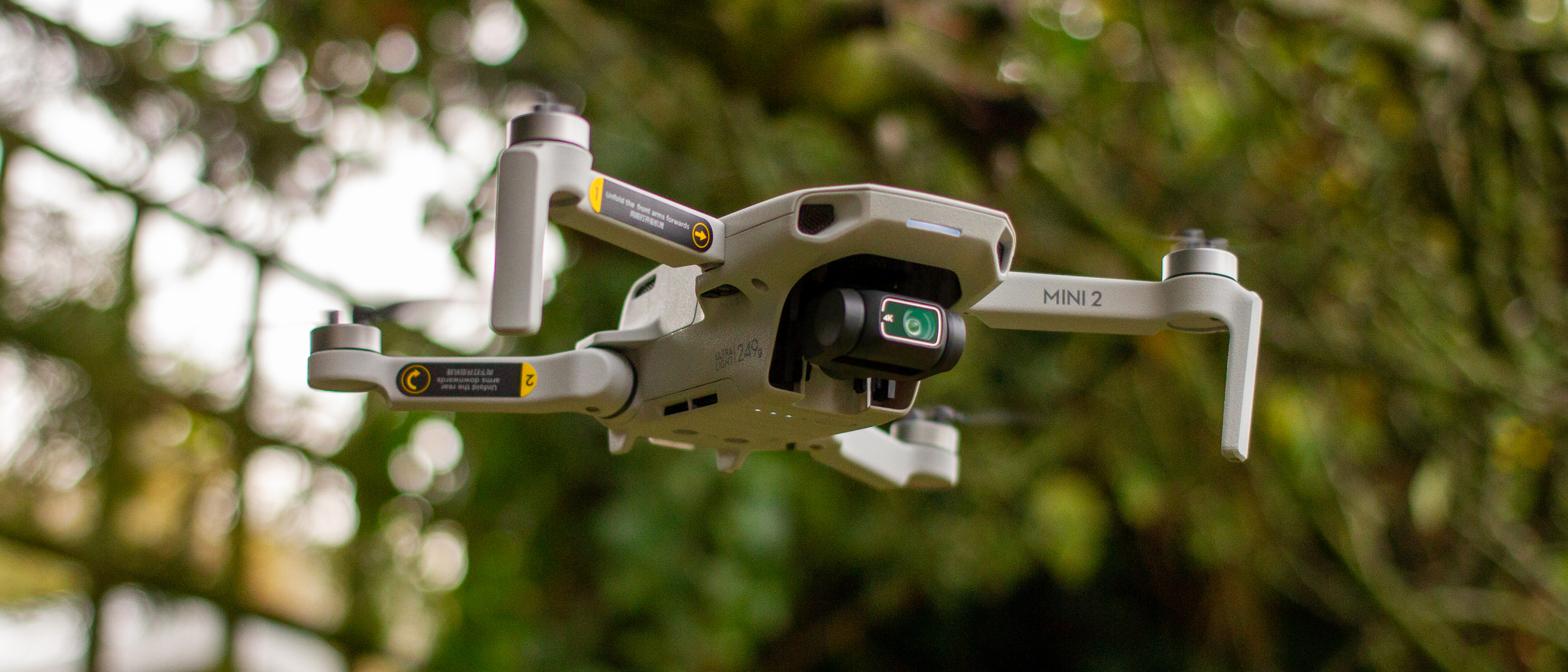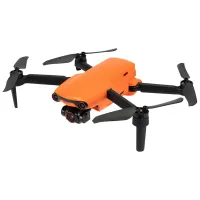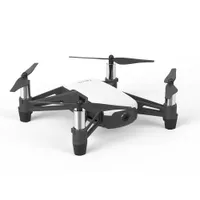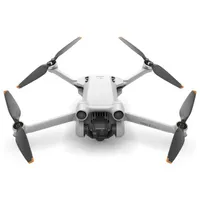TechRadar Verdict
The DJI Mini 2 is the perfect entry-level drone for beginners looking to get to grips with flying, capturing, and editing birds-eye views of beautiful landscapes and cityscapes (where permitted). Unlike the original Mavic Mini, the Mini 2 offers 4K resolution, although it has a smaller sensor size than the Mini 3 Pro and lacks obstacle avoidance sensors. But whichever you opt for, you won’t be disappointed, as long as you're happy to shoot during the brighter daylight hours.
Pros
- +
Intuitive navigation
- +
Compact, convenient drone
- +
Great battery life
Cons
- -
Pricier than predecessor
- -
No new camera hardware
- -
No follow mode
Why you can trust TechRadar
Two-minute review
The DJI Mini 2 is an ultra-compact drone that’s so small and easy to use that you can slip it out of a jacket pocket and launch it within seconds.
It's since been succeeded by the DJI Mini 3 Pro, but remains on sale as a more affordable alternative to that model. This makes it one of the best beginner drones for those who want to capture 4K video without some of the high-tech wizardry of the pricier DJI drones that dominate our best drones list.
The DJI Mini 2’s design is virtually identical to that of the Mavic Mini, but what’s seen a revamp is that controller, which is beautifully streamlined and delivers a boosted experience.
Just like its larger Mavic siblings, the Mini 2 is collapsible with arms that unfurl to transform the palm-sized unit into a drone with just a few spring-loaded maneuvers.
The Mini 2 weighs less than 249g. This means it doesn’t currently need to be registered with aviation agencies in the US, UK, and Australia, but do check your local laws – it's also worth bearing in mind that recent UK drone law changes mean it does need to be registered, regardless of that identical weight.
Sensor: 1/2.3-inch CMOS, 12MP
Lens: f/2.8, 24mm equivalent (84-degree FOV)
Weight: 249g
Video: 4K/30p, 1080/60p (100Mbps bit-rate)
Photos: 12MP (JPEG and raw)
Flight time: 31 minutes per charge
Transmission: OcuSync 2.0 transmission
Dimensions (folded): 131x81x58 mm
This weight is, perhaps, less impressive the second time around – it was the original Mavic Mini that broke this glass ceiling, but we really can’t overstate the extent to which the Mini 2's weight makes it convenient on all fronts.
In the process of doing our DJI Mini 2 review, we found its best feature to be that new controller. Revamped in its entirety, simplicity is the name of the game here, and while it looks less like a Transformer given its fewer moving parts, there's still an undeniable Johnny 5-like charm about it.
Sign up for breaking news, reviews, opinion, top tech deals, and more.
The DJI Fly app is also a well-balanced combination of simple to use, but with powerful features. Casual drone flyers won’t need to venture beyond the main interface, but there's plenty to master.
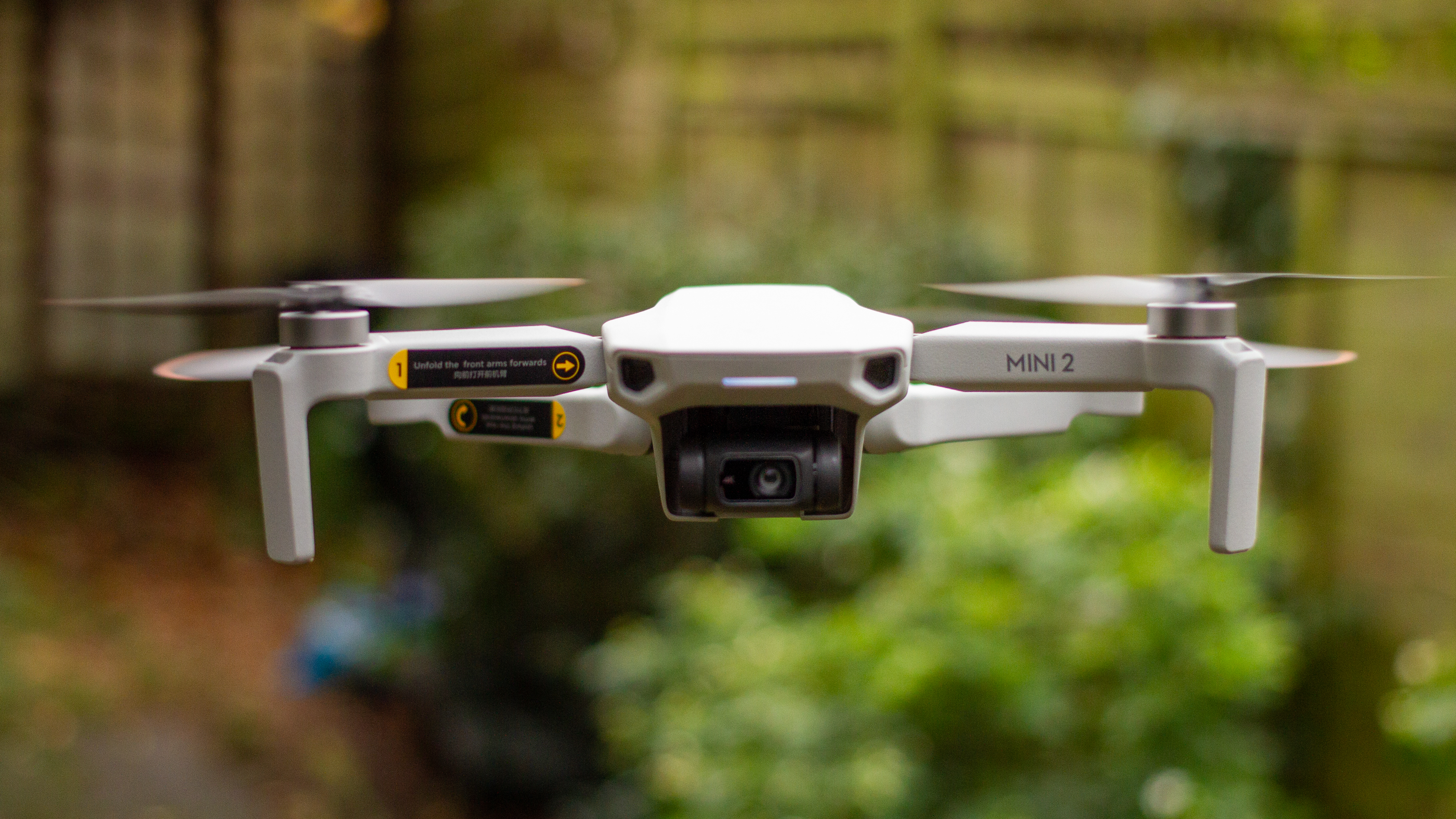
DJI’s reliable stabilization has become as synonymous with the brand as the shades of grey that adorn all its consumer products, and we’re here for all of it.
The first thing to note about the DJI Mini 2’s video is that it’s rock-steady in all but the windiest conditions – mighty impressive for such a dinky drone. Even with level five wind resistance, a blustery London skyline was child’s play for this quadcopter.
Unedited footage can look a bit flat and underexposed in overcast scenes; it’s clear DJI processes footage cautiously and with video editors in mind. The clarity is respectable. Digital zooming is limited to about 2x if you’re shooting in 4K, though you can get usable 3x zoom footage at 1080p. As soon as the light drops, though, so too does the Mini 2’s usable zoom range, and indeed usable footage.
Rounding off with solid battery life, on a slightly windy day, we got around 30 minutes of flight time on a single charge when shooting at mixed 1080p and 4K resolution, and the Fly More Combo’s three batteries combine for around 90 minutes in the air.

DJI Mini 2 price and release date
- Announced in November 2020
- Available in two bundles, including a Fly More Combo
- Prices start at $449 / £419 / AU$749
Announced in November 2020, the DJI Mini 2 is available in two flavors – the plain vanilla pack with the drone and a few extras, and the Fly More Combo which packs a bunch of extra kit, most notably a triple battery pack.
The standard package sees the mini-drone ship with a battery, camera guard, controller, and a few cable and rotary blade options, and costs $449 / £419 / AU$749.
In our week with the drone, we used the DJI Mini 2 Fly More Combo, which includes three batteries in total and a battery pack which simultaneously charges all three and turns it into a portable power pack. It also features extra spare rotary blades and screws, a clasp that secures the blades in place, an 18W power charger, and a handy bag for transporting the drone and all its accessories.
A notable omission, when compared to the original Mavic Mini’s Fly More combo, is the 360-degree propeller guard. As for price, this premium package will set you back $559 / £549 / AU$949.
Anyone familiar with the Mavic Mini will notice a bump in price over the original too, which launched a year prior to the Mini 2 for $399 / £369 / AU$599. We'll be keeping a close eye on the Mavic Mini's price tag, as it could well dip into bargain territory.
DJI Mini 2 review: design
- Measures just 131x81x58mm and weighs 249g
- Has vision sensors on its base, but lacks obstacle avoidance
- Now has USB-C charging, rather than microUSB
The DJI Mini 2 design inherits the palm-sized dimensions and foldable arms of the Mavic Mini for a size that’s so small it won’t cause a distraction when you’re flying it through the air.
In fact, it weighs just 249g, a headline feature because you won’t currently need to register this drone in the US, UK, and Australia (though UK law changes from the end of December will unfortunately change this). Sure, the Mavic Air 2 is incredibly compact and lightweight, too, but DJI doubles down with the Mini 2 – it really feels like your own take-it-anywhere sky camera.
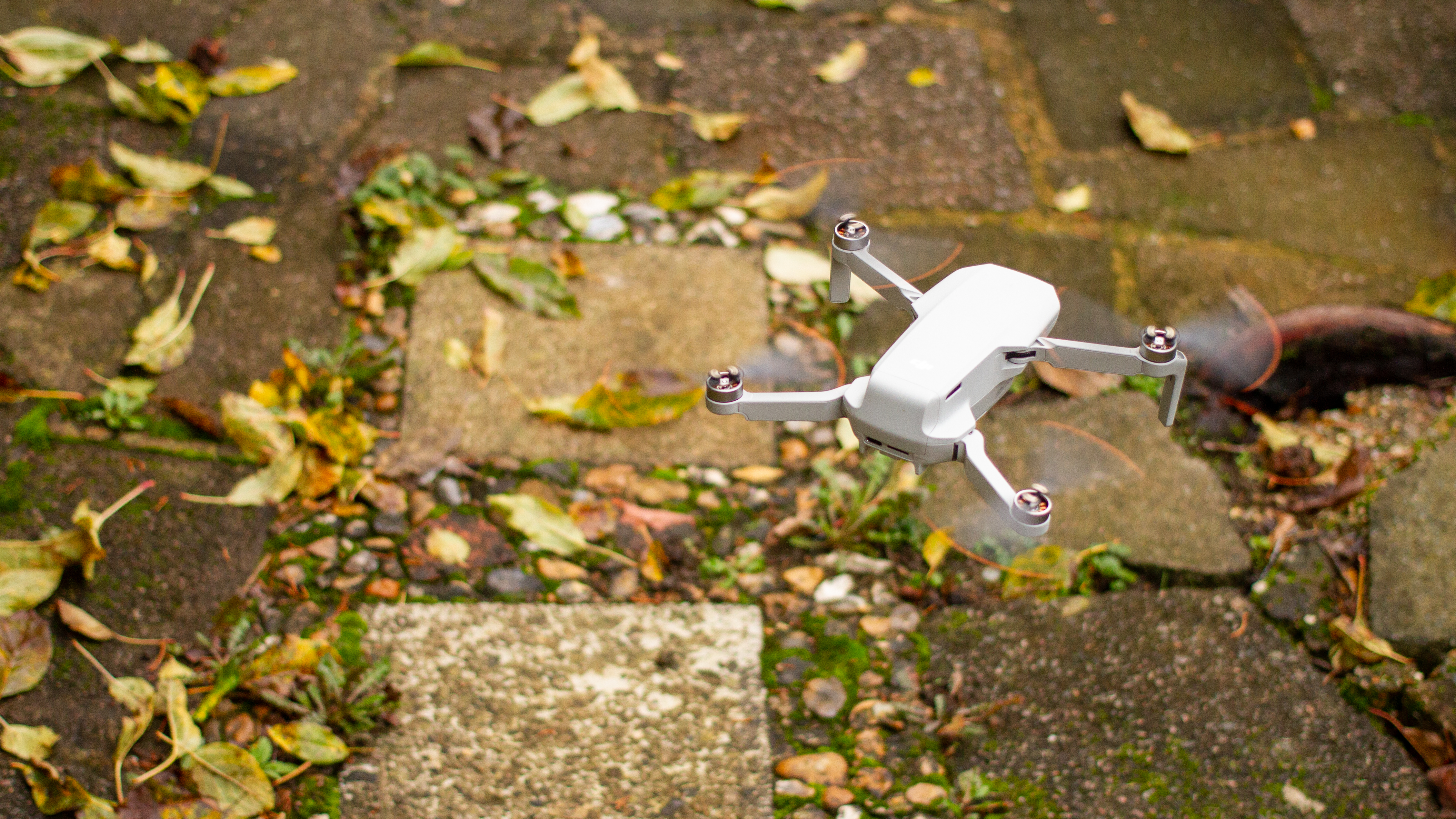
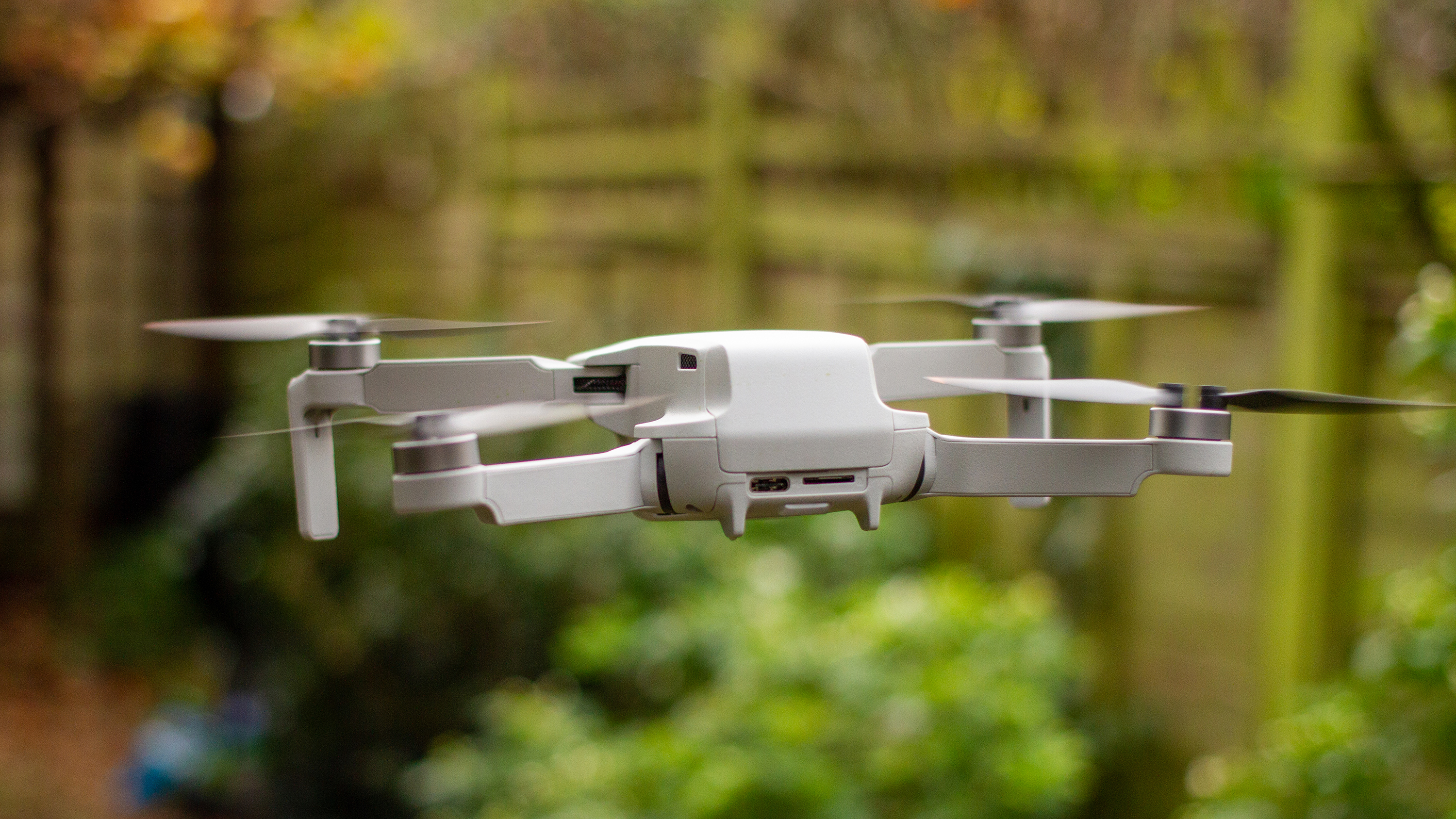
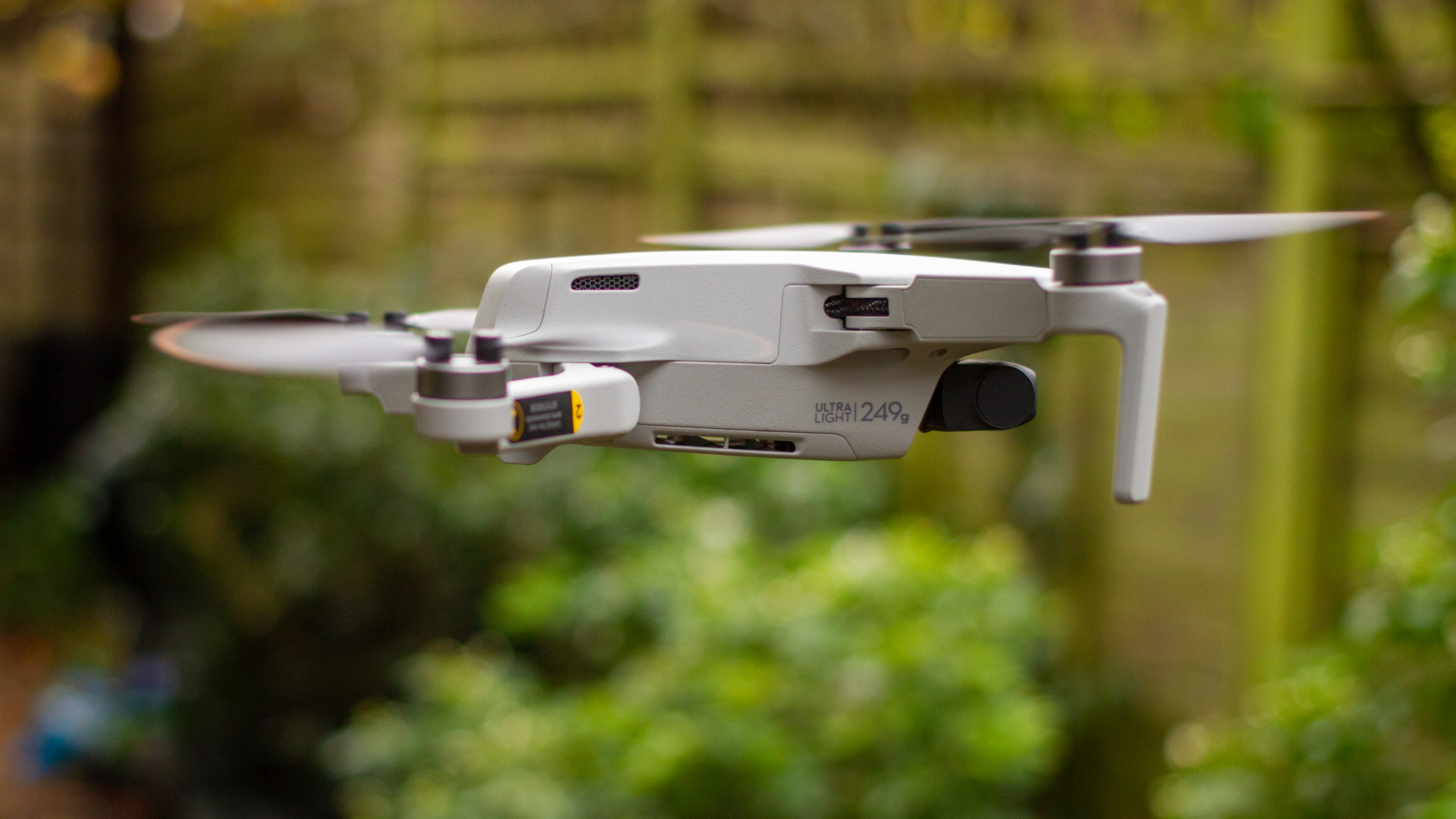
On the front of the Mini 2 is the three-axis stabilized camera. Out of the box, it's shielded by a camera guard, which is removable when you come to fly it. On the back is an exposed microSD card slot, as well as a USB-C port (upgraded from micro-USB on the Mavic Mini). This can be used for on-the-fly charging. Above these is the battery flap and it’s a piece of cake switching out both battery and storage – we love the handy hot-swapping.
Unlike the DJI Mavic Air and bigger drones, the DJI Mini 2 doesn’t sport obstacle avoidance sensors on its sides, front or back. That said, there are a couple of sensors at the base, so when it senses a surface or obstruction below, it bounds up abruptly to avoid it. The undercarriage also houses a battery meter and light, so you can keep the drone in line of sight, even at night.
DJI Mini 2 review: controller and handling
- New antenna-free controller design
- Familiar DJI Fly app experience
- Powerful and simple to use
The best thing about the new DJI Mini 2 is its controller. Revamped in its entirety, simplicity is the name of the game here. Only the DJI Mavic Air 2 has the same advanced controller so far.
Loaded up with a 5,200mAh battery, it’s little wonder the DJI Mini 2’s controller weighs 390g – significantly more than the drone itself. Its left and right joysticks are stored in the bottom part of the unit and screw onto their respective ball-socket element without too much fiddling.
The spring-loaded phone holder expands out of the top of the controller and its cavity houses a connector cable, with three shipping in the box: Lightning, micro USB, and USB-C.
As for buttons, there’s a Fn button set to one-press vertical axis pans by default, a mode switch, and buttons for landing and power. There’s also a physical slider that switches between Cine, Normal, and Sport modes, an incredibly handy addition when in mid-flight for anyone who doesn’t want to faff with a digital interface.
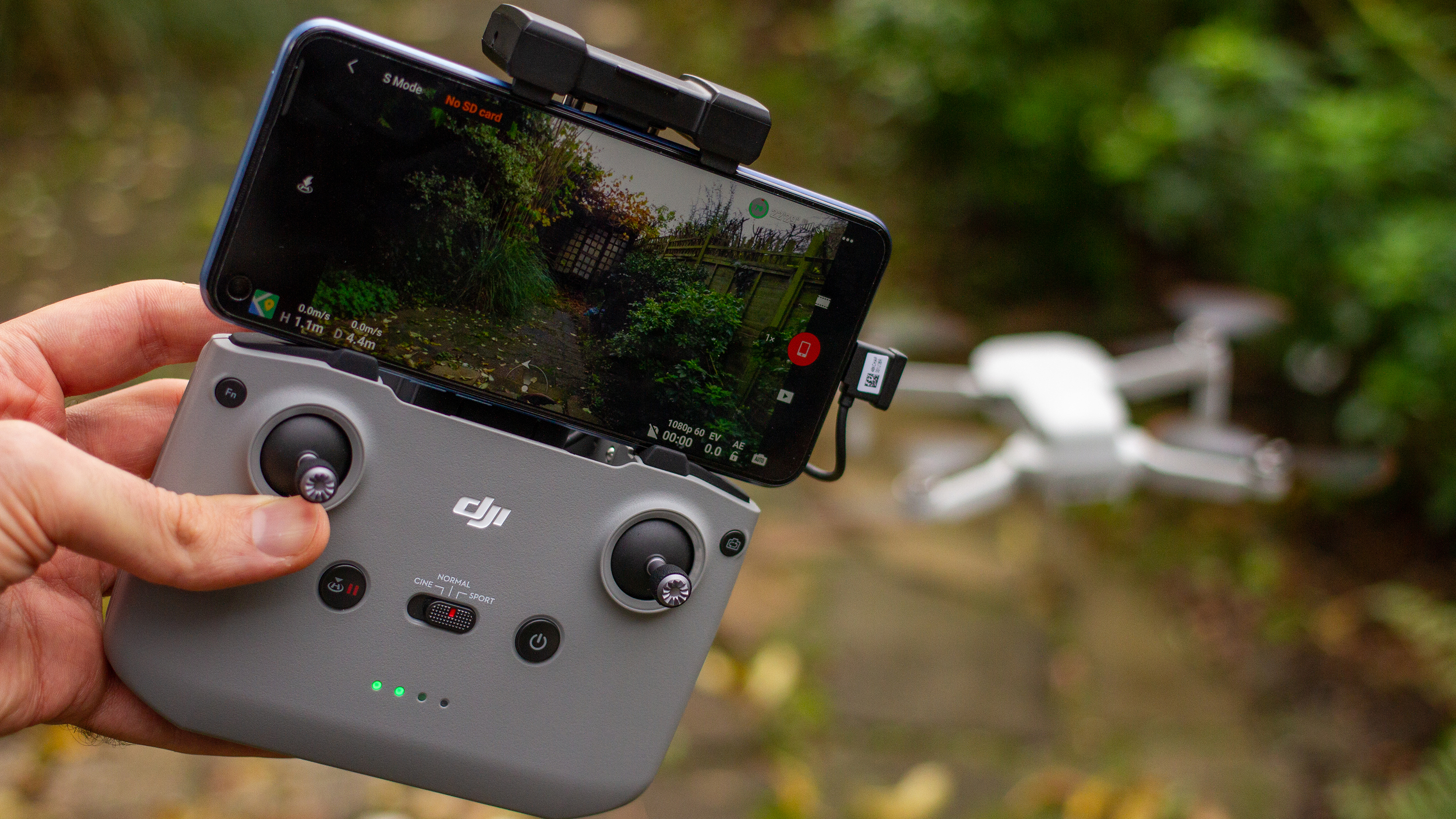
Around the back of the controller is an R trigger, and where the L trigger would be is a jog-dial which controls the DJI Mini 2’s vertical panning. What’s exceptional about the controls, from the joysticks to the dial is the degree to which incremental nudges are registered. Smooth, slow, silky pans can even be achieved in Sports mode, so when you get the hang of it, the sky really is the limit when it comes to stylized maneuvers.
Another highlight of the DJI Mini 2 is the ease with which we were able to get it off the ground, up in the air, and performing all kinds of party tricks. We thought the original Mavic Mini was an easy to operate marvel, but DJI’s outdone itself with a more intuitive controller and what feels like an altogether more nuanced control system in general.
With a video transmission of up to 10km, the Mini 2 boosts its range by 150% when compared to the original. We would love to be able to say we pushed it to its limits, but unlike our experiences with the Mavic Mini, in the same Drone-safe area, we couldn’t legally fly high or far enough to get the connection to waver on the Mini 2, which is pretty great going.
DJI Mini 2 review: DJI Fly App
- Simple connection and navigation
- Less reliance on app with improved controller
- Change modes and access QuickShots
The DJI Fly app is a well-balanced combination of simple to use, but powerful enough to offer depth to more experienced fliers.
Casual drone flyers won’t need to venture beyond the main interface. There’s a take-off and land button (which is also on the controller), a map shortcut in the bottom left, a shutter release button on the right as well as a mode switcher, gallery shortcut and a toggle between manual photo and video.
Dotted around the DJI Fly app UI are a host of useful readings. These include height, remaining record time, exposure compensation, battery percentage, and controller signal.
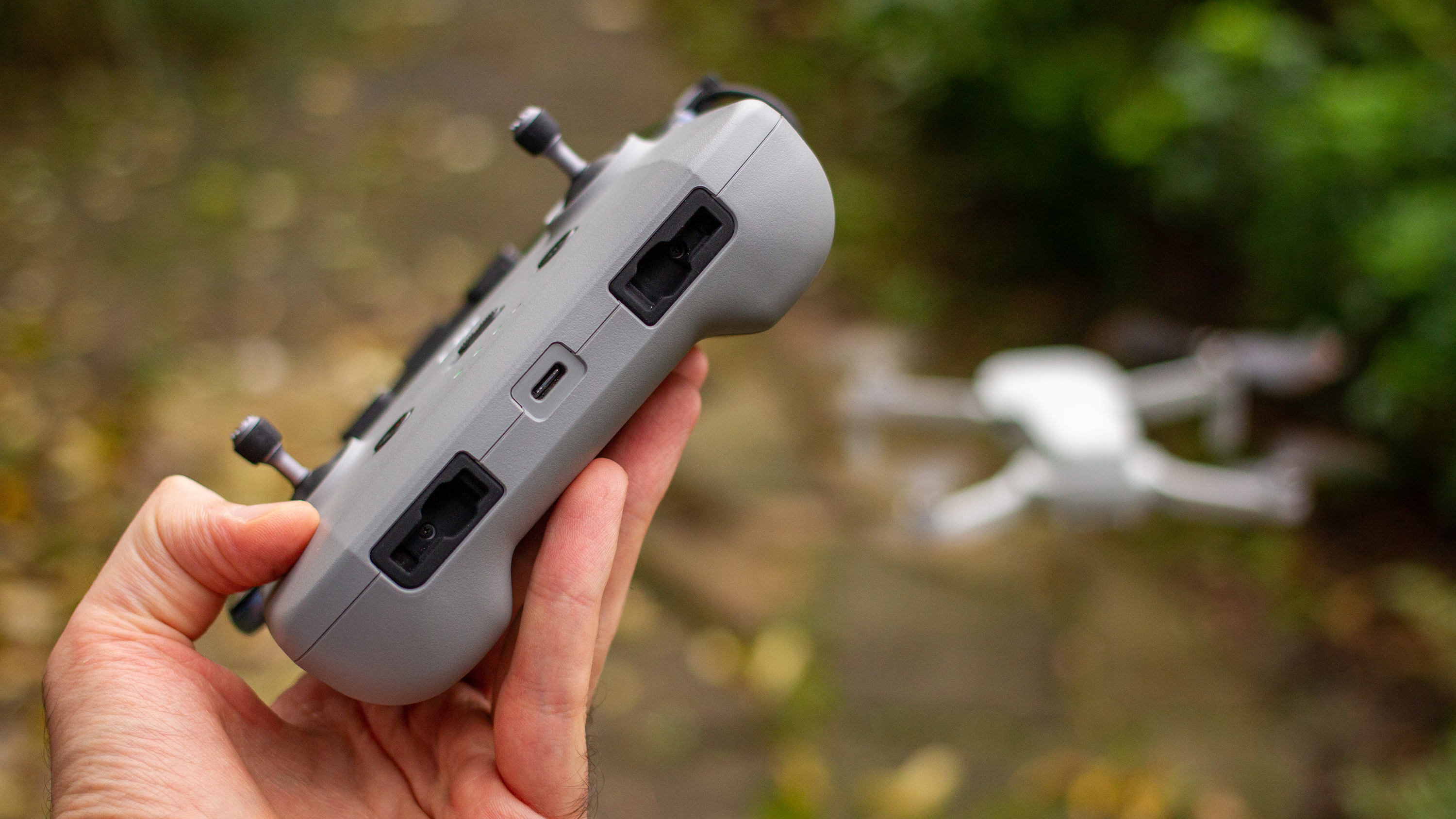
Where the app excels for power users is the expanded menu, accessible by hitting the three dots in the top right. This is where max altitude and distance can be set, as well as your Mini 2’s home point.
The app is also where you can tap into the front LED’s RGB spectrum, giving the DJI Mini 2 a gaming laptop vibe. Handy when flying with multiple drones, it makes identifying yours a doddle, and you can switch out the RGB mode across breathing, rainbow, and solid too.
With expanded options to fire up a histogram, overexposure warnings, and gridlines, not to mention switching out the refresh rate across 50hz and 60hz, it’s commendable just how well DJI’s balanced the pro features with a simple UI at the heart.
Finally, the app opens up manual photo shooting with an optional shutter speed of up to four seconds for photos and 1/60 seconds for video, and a max ISO of 3200 across both modes.
DJI Mini 2 review: features and performance
- Up to 4K resolution 30fps
- 12MP still images
- Five QuickShot modes
In the DJI Fly app, press the shooting modes button, and a simple menu cascades in from the right side with a host of shooting modes. The first set of options are Photo, Video, Quickshot, and Pano, but you can dive into each of these for more granular settings.
Within Photo mode, you can switch between snapping a single photo at a time, AEB (auto-exposure bracketing) for HDR shots, as well as auto-timer. Select Video mode to set resolutions (1080p, 2.7K and 4K) and frame rates (up to 60fps in 1080p, 30fps in all other modes).
There are also five QuickShot modes which are pre-defined flight paths that track a subject (Circle, Boomerang, Dronie, Helix, and Rocket), and three panorama options (traditional, 180-degree and 360-degree).
What about battery life? On a slightly windy day, we were hitting around 30 minutes on a single charge when shooting at mixed 1080p and 4K resolution. When the battery is low, the clever Mini 2 returns to its home point to make sure it doesn’t get caught out.
The main reason to buy the Fly More pack is that it lets you do just that, fly more. With three 2,250 mAh batteries included, you can get around 90 minutes of flight time, which is fantastic.
The drone’s battery isn’t the only cell worth talking about. The Mini 2’s 5,200mAh controller battery is huge, lasts for ages and takes a couple of hours to power up. It also charges your phone while connected.
Meanwhile, the Fly More Combo’s power pack also turns the three batteries the DJI Mini 2 ships with into an 18W fast charging power bank for your smartphone or another accessory.
DJI Mini 2 review: video and photo quality
If you’ve ever used a DJI product, whether it’s the DJI OM 4, DJI Pocket 2, or any of its drones, the overriding theme is smooth and steady. DJI’s reliable stabilization has become as synonymous with the brand as the shades of grey that adorn all its products, and we’re here for all of it.
The first thing to note about the DJI Mini 2’s video is that it’s rock-steady in all but the windiest conditions — mighty impressive for such a dinky drone. With level five wind resistance, a blustery London skyline was child’s play.
Across its three modes, Normal (medium), Cine (slow) and Sports (fast), it whizzes when strafing across landscapes, and while sudden changes of direction can leave the horizon level off, even inexperienced flyers can get fantastic looking footage as the Mini 2 usually sorts itself out pretty quickly.
The core sensor/lens specs match last year’s model like-for-like, which means existing Mavic Mini owners will likely begrudge forking out extra for this upgrade.
The Mini 2’s 83-degree (24mm equivalent) field of view means the drone’s framing isn’t dissimilar to that of a human eye, if slightly wider. Meanwhile, the f/2.8 aperture fixed-focus lens is wide open, but still narrow enough to keep skies from blowing out too easily.
To recap, both the Mavic Mini and Mini 2 feature 12MP 1/2.3-inch CMOS sensors with a maximum resolution of 4000 x 3000 (or 16:9, 4000 x ×2250).
While the DJI Mini 2’s hardware is very familiar, the improved motors, stabilization and wind resistance help lighten the camera and gimbal’s workload, and the results generally impress.
Unedited footage can look a bit flat and underexposed in overcast scenes; it’s clear DJI processes footage cautiously and with video editors in mind. After all, you can bring up shadows in an edit, but you can’t pull back blown-out highlights, and the Mini 2's video is poised to be picked up in post, especially when shooting in overcast conditions.

The bump in video resolution from 2.7K to 4K is welcome. Sure, technically, there’s no reason we can think of that 4K capture wasn’t built into last year's model, but in well-lit scenes, the extra recorded pixels mean more scope for zooms and crops.
Digital zooming is limited to about 2x if you’re shooting in 4K, though you can get usable 3x footage at 1080p. As soon as the light drops, though, so too does the Mini 2’s usable zoom range.
As you'd expect with such a small sensor, this isn't a drone for shooting in gloomy conditions. The Mini 2's video struggles when the sun drops, though its photos bear up a bit better. Its propensity to underexpose slightly also compounds middling performance in dimly lit scenes. In turn, we’d recommend keeping flights to bright and beautiful days when possible.
With manual photo and video shooting, you can override the auto mode to boost low-light performance. The panorama feature is also great, working better than that of the 64MP DJI Pocket 2 when it comes to dynamic range across an expansive scene.
Should I buy the DJI Mini 2?
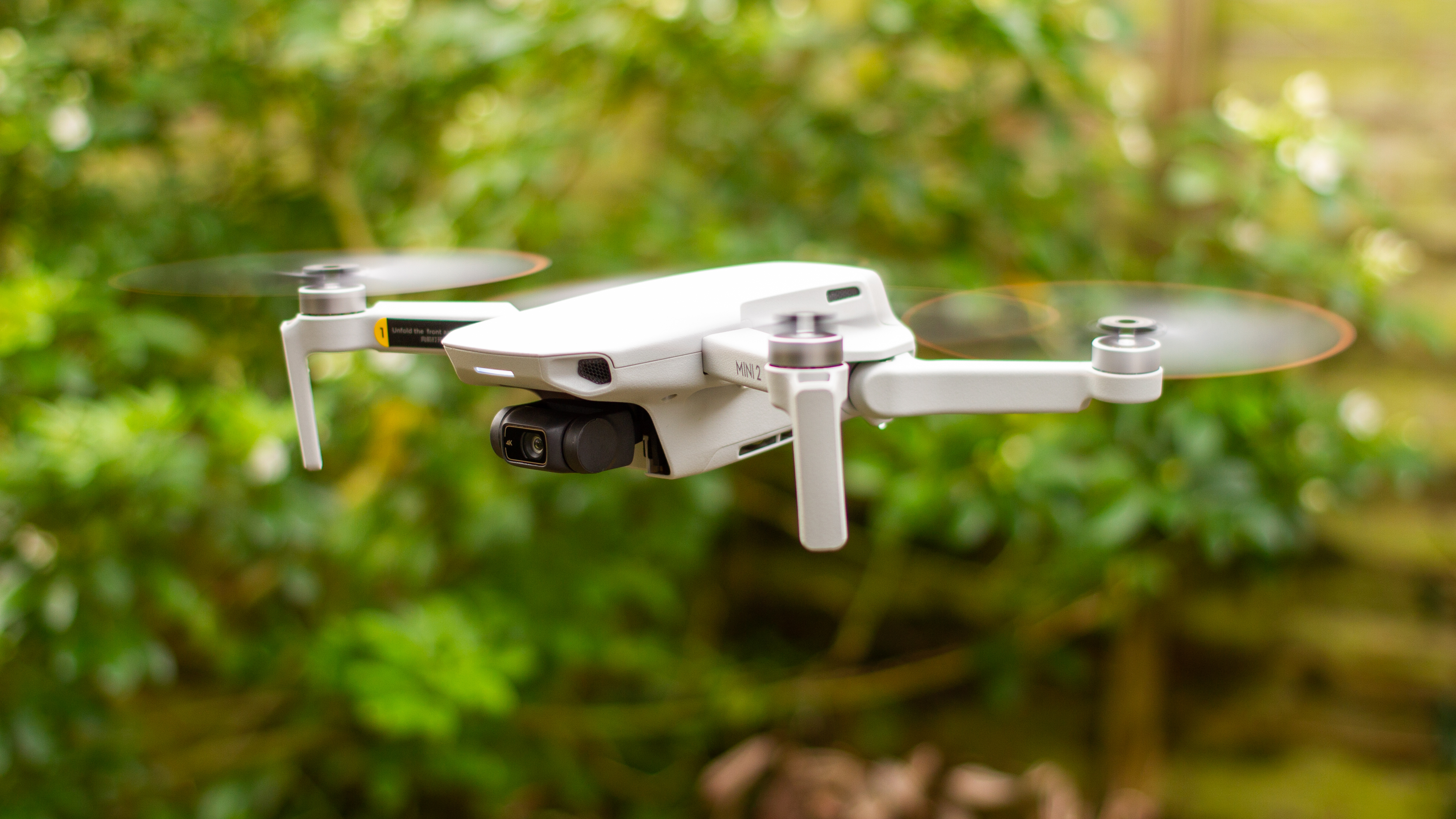
Buy it if...
You want the best pocketable drone about
With its 4K video capture, improved controller, boosted range, and ramped up wind resistance, the DJI Mini 2 is the best lightweight drone around. Admittedly, the original Mavic Mini is still its main competition, and it beats it in every area other than price.
You need 4K video
In well-lit scenes, the DJI Mini 2's 4K capture ensures zooms look crisper and crops hold up better, while splicing DJI Mini 2 footage into a 4K project won’t leave you compromising on quality.
You’re a novice drone user
Right now, the DJI Mini 2 doesn’t need to be registered in most countries due to its weight, but that's not the only benefit of its size. Its incredibly intuitive control system means you’ll be hard-pressed to find a better quality drone to get your hovering off the ground.
Don't buy it if...
You’re on a tight budget
If money’s no object, the DJI Mini 2 is a cracking starter drone. But if you’re looking for the best value, you could be better off with the original Mavic Mini. It costs less if you shop around, and thanks to the fact it sports virtually identical camera hardware, footage is comparable, even if its resolution caps out at 2.7K.
You already have a Mavic Mini
While the DJI Mini 2 is better than the Mavic Mini, it isn’t a huge leap either. If you’re happy with 2.7K resolution footage, the main benefit of upgrading will come in the form of that improved controller, so our advice would be to hold onto your pennies and wait for a DJI Mini 3.
You’re a night-time flier
Any drone flyers who anticipate a lot of late-night flights will be better served with a more premium drone like the DJI Phantom 4 Pro V2.0. What it lacks in wallet-friendliness and portability, it makes up for in video quality thanks to that 1-inch sensor and pro-grade feature set.
Also consider...
Has our DJI Mini 2 review got you considering alternative options? Here are three of the best drones to consider instead...
Autel Evo Nano+
Like the DJI Mini 3 Pro, the Evo Nano+ is a pricey sub-250g drone, but also great for beginners. We found its low-light performance to be excellent, which makes it particularly strong for capturing sunsets or nighttime cityscapes. But it also currently lacks the polish of its DJI rivals.
Read our in-depth Autel Evo Nano+ review
Ryze Tello
Looking for a truly affordable drone to help hone your flying skills? The Ryze Tello is actually based on DJI's flight tech and is small, lightweight and manages to pack in a camera that captures 5MP photos and 720p HD video. Just don't expect super-smooth video quality or a drone that can handle anything more than a light breeze.
Read our in-depth Ryze Tello review
DJI Mini 3 Pro
You may have already written off the DJI Mini 3 Pro due to its lofty price tag, but it's certainly worth the premium if you can justify it. Aside from its larger 1/1.3in sensor, one of the main benefits over the Mini 2 are its obstacle avoidance sensors, which are helpful for those who are learning to fly. The fact that it packs all of this into such a 249g bundle is nigh-on miraculous.
Read our in-depth DJI Mini 3 Pro review
First reviewed in November 2020

Basil Kronfli is the Head of content at Make Honey and freelance technology journalist. He is an experienced writer and producer and is skilled in video production, and runs the technology YouTube channel TechEdit.
- Mark WilsonSenior news editor
